ARTAS Robotic Hair Transplant: A Comprehensive Guide
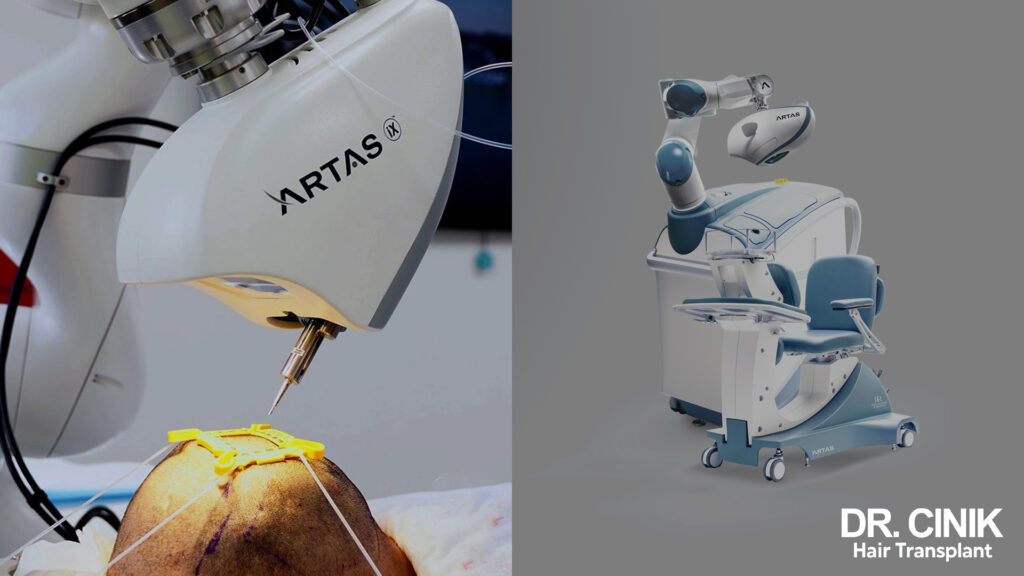
Sommaire
Hair transplantation is gaining popularity, especially in Turkey, renowned for its expertise in this field. This growing interest coincides with the arrival of innovative techniques, such as Automatic Follicular Implantation (IFA) or ARTAS graft, a robotic method that is revolutionising hair transplants. Although widely used today, this technique has drawbacks and may produce less natural results than a manual graft performed by an experienced surgeon.
How the IFA/ARTAS Robotic Hair Transplant Works
The IFA or ARTAS robotic transplant procedure combines cutting-edge technology with delicate surgical techniques. The donor and recipient areas are first prepared, usually by shaving them for easier access and precision of the robot. Local anaesthesia is administered to minimise discomfort.
The robot then intervenes to extract the grafts. It uses artificial intelligence and advanced sensors to identify and harvest the most viable follicular units from the donor area.
Depending on the system used, the surgeon can manually implant the grafts in the recipient area or have the robot do it automatically. Precision is crucial for a natural result and even hair distribution.
Good to know: The ARTAS focuses only on graft extraction, while more advanced models like the ARTAS IX can perform both extraction and implantation. The choice depends on the patient’s needs and the surgeon’s recommendations.
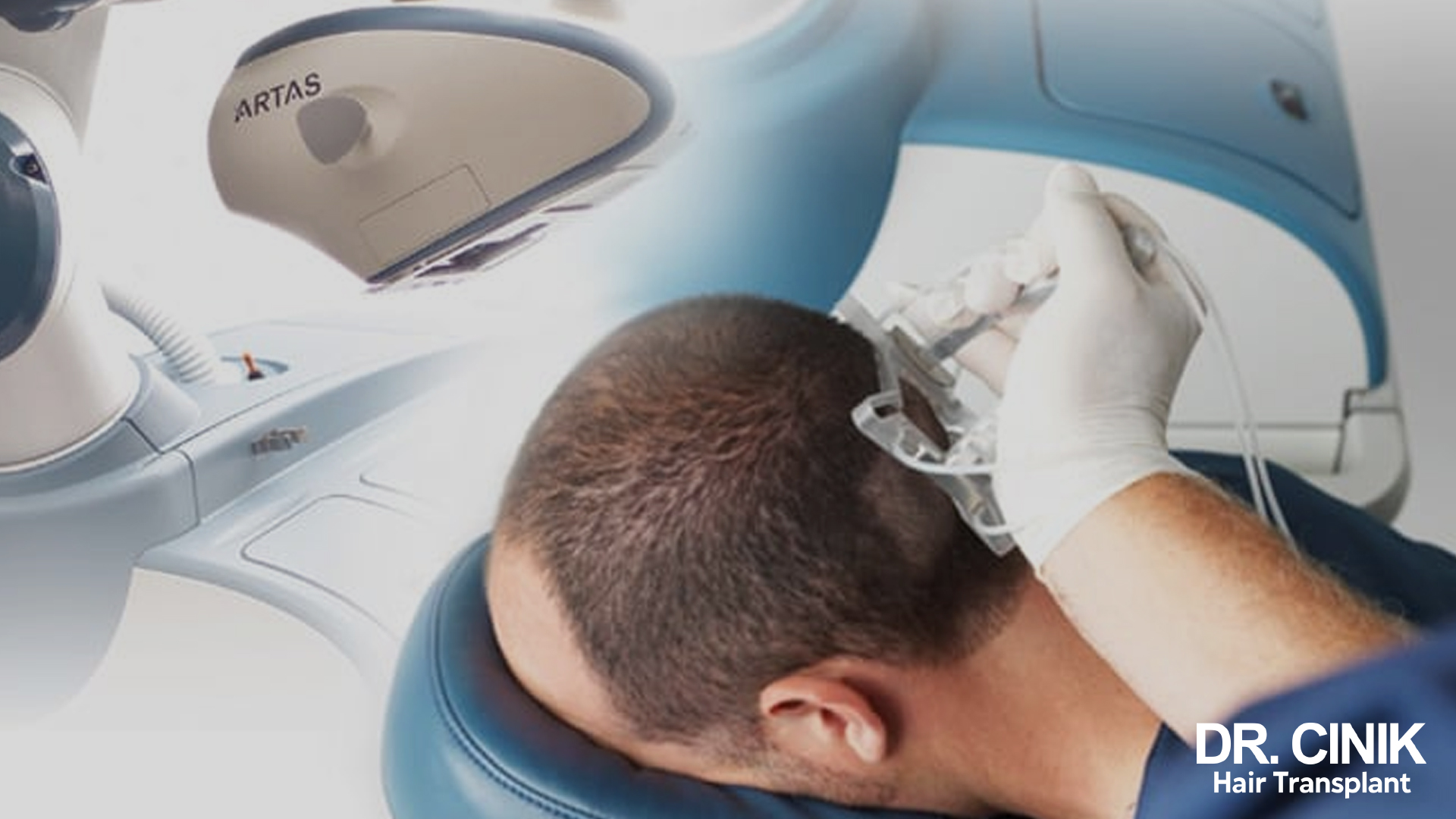
The Two Main Robotic Systems
The two dominant robotic systems in the field of hair transplantation are the SAFER robot from Neograft and the ARTAS robot from Restoration Robotics.
Neograft SAFER Robot
This system uses a specialised Punch Air Matic device designed to extract hair follicles. This punch is renowned for its precision and ability to minimise trauma to the follicles and the donor area.
SAFER requires the active involvement of the surgeon, who controls the device and adjusts the parameters according to each patient’s specific needs. This human intervention ensures a high personalization of the transplant process.
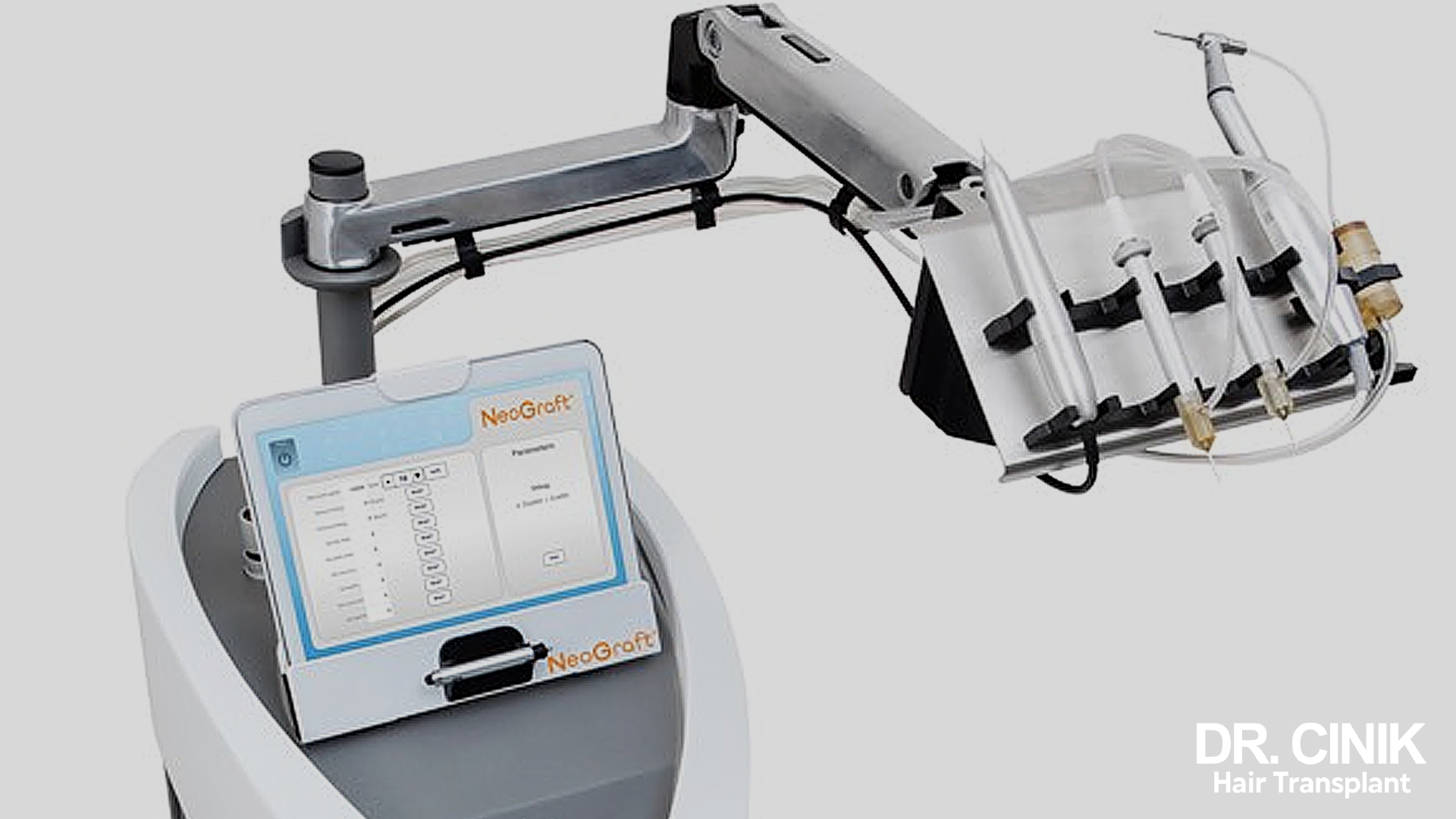
ARTAS Robot by Restoration Robotics
ARTAS is equipped with advanced cameras and automated punches. These components enable precise mapping of the donor area and facilitate efficient and precise extraction of follicles.
The system uses sophisticated algorithms to identify and select the best follicles for transplantation. This automatic selection is based on density, angle, and other vital criteria to ensure optimal graft quality.
The most advanced version, the ARTAS IX, offers the ability to perform both extraction and implantation fully automatedly.
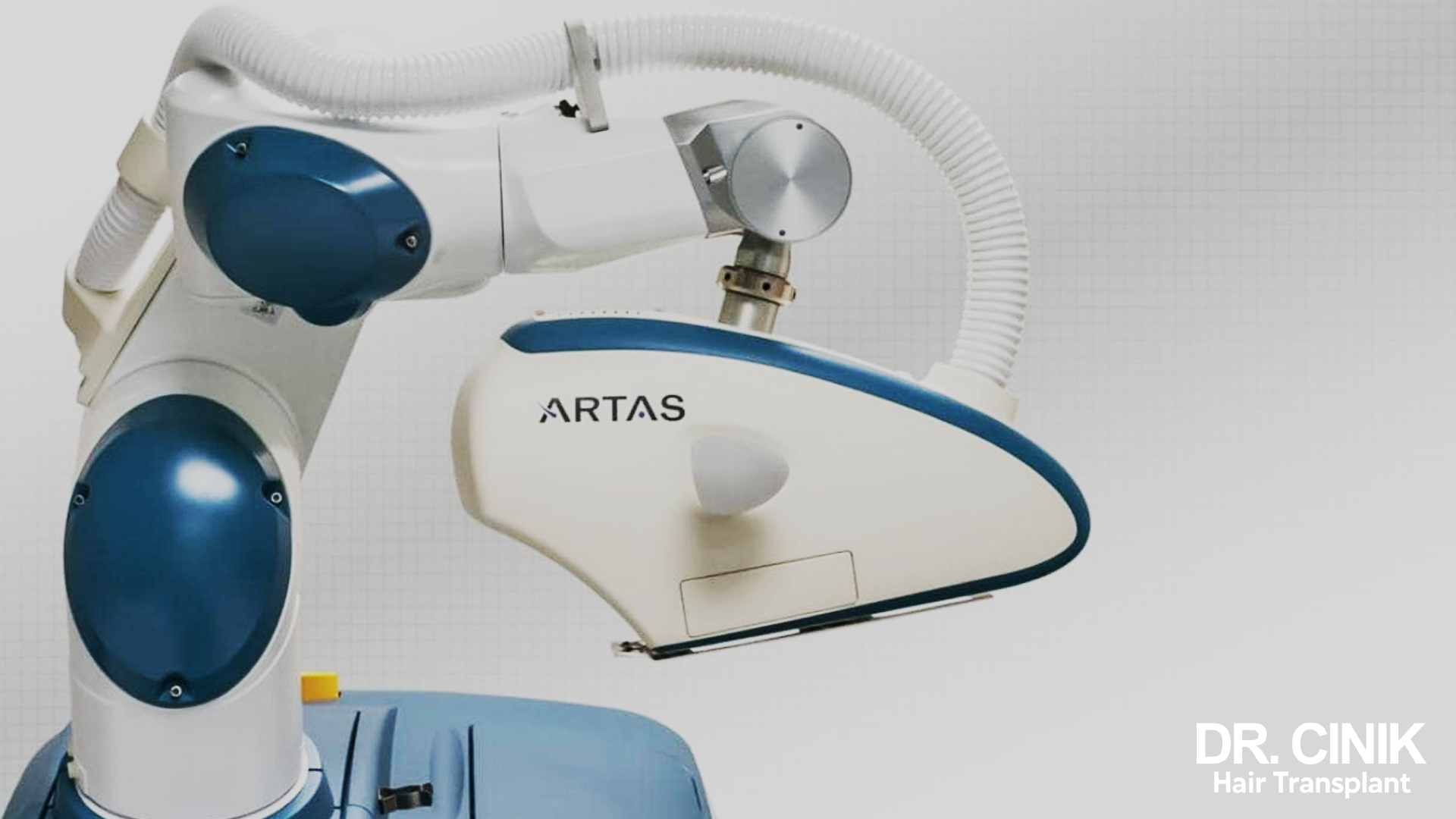
Advantages of IFA/ARTAS Robotic Hair Transplantation
Robotic hair transplantation, including IFA/ARTAS, has several significant advantages:
- Ability to select the best grafts for transplantation using advanced algorithms, ensuring superior graft quality.
- Significantly speeds up the graft extraction process, eliminating manual fatigue and allowing faster and more consistent sampling.
- Shortens the duration of the procedure, providing increased comfort for the patient and reducing time spent in surgery.
- The minimized and precise approach to extraction reduces trauma to the donor area, resulting in less scarring, faster healing, and better post-operative aesthetics.
- Grafts spend less time outside the scalp between extraction and reimplantation, improving graft survival rates.

Limitations and Disadvantages of IFA/ARTAS Robotic Hair Transplantation
Although IFA/ARTAS robotic hair transplantation has many advantages, it also has some limitations and disadvantages to consider:
- Less effective on very fine or curly hair, as the system may have difficulty correctly identifying and extracting these hair types.
- Typically designed to harvest grafts from the sides and back of the skull, which may be a disadvantage for patients requiring sampling from larger or different areas.
- Robotic implantation does not yet reach the level of skill and finesse of an experienced surgeon, as the artistry and manual adjustment performed by a surgeon are often crucial for a natural result.
- Fully automated systems are relatively new, and long-term results require further follow-up and study to be fully validated.
- The high investment cost for clinics is often reflected in the price charged to the patient, making robotic transplantation more expensive than a traditional manual transplant.
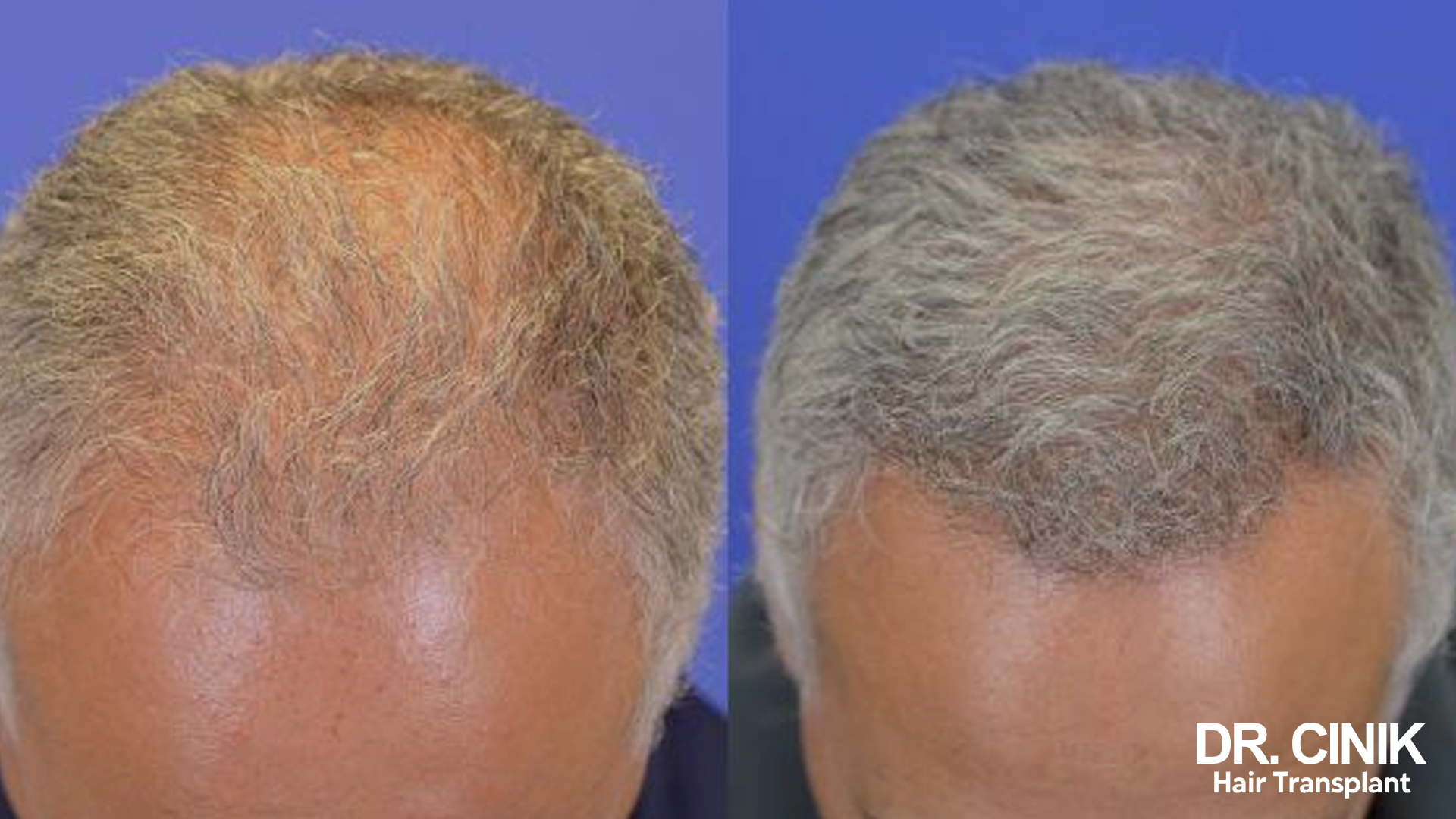
IFA vs. FUE, FUT, and DHI: Which Grafting Technique to Choose?
When choosing between different hair transplant techniques, such as IFA/ARTAS, FUE, FUT, or DHI, several factors must be considered, including hair type, specific patient needs, and advice from the surgeon.
- FUE, which involves manual extraction and implantation, is often considered the gold standard due to its versatility and ability to leave small, nearly invisible scars.

- FUT, known for its strip graft harvesting, is still used but less popular because of the more visible linear scar it leaves and a generally longer recovery.
- DHI, carried out with an implanter pen, is distinguished by its extremely high precision, allowing careful control of hair implantation, but it is often the most expensive.
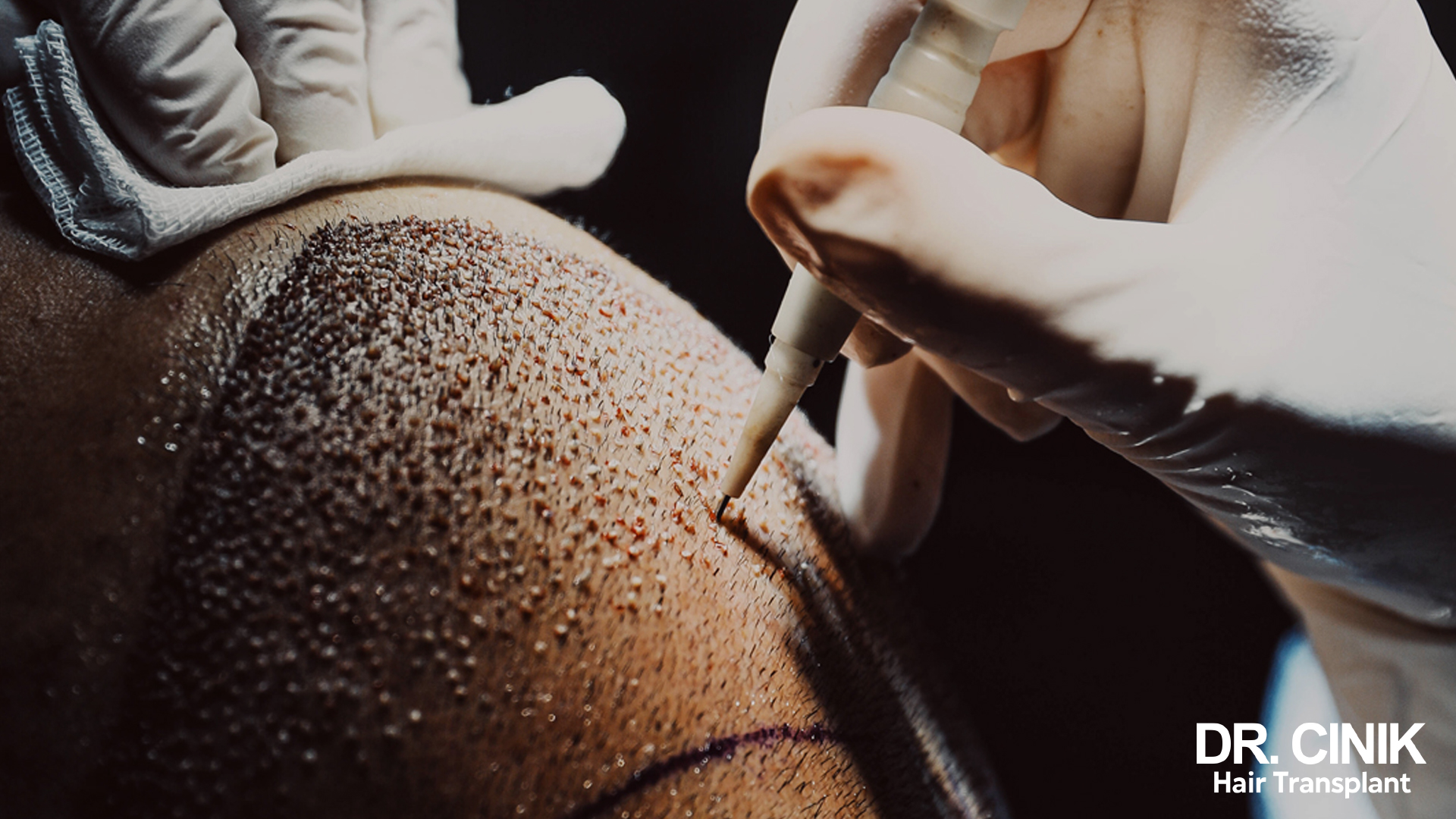
- IFA/ARTAS is suitable for small and medium-sized grafts and offers robotic precision and increased patient comfort. However, this method may be less effective on very fine or curly hair and tends to be more expensive.
The choice of technique largely depends on the surgeon’s diagnosis, which considers various factors, such as the density of the donor area and the texture of the hair. Patient expectations and preferences also play a crucial role. Additionally, it is becoming increasingly common for surgeons to combine techniques, such as IFA and FUE, to achieve the best possible results based on individual needs.

Patients should speak with an experienced surgeon to choose the most suitable method, considering the technical advantages of each option and their personal aesthetic goals.
 en
en



